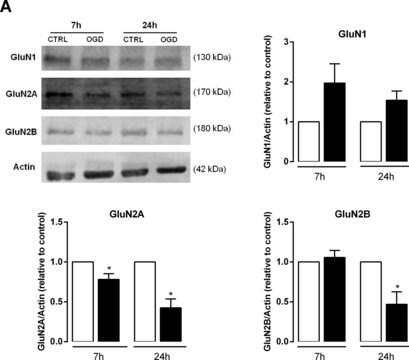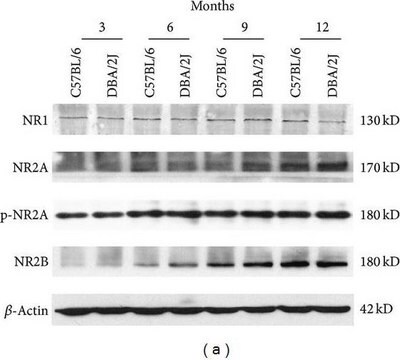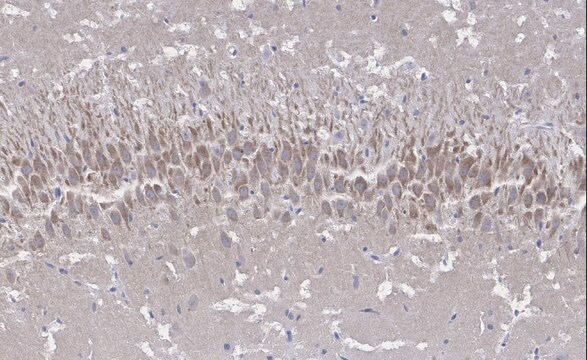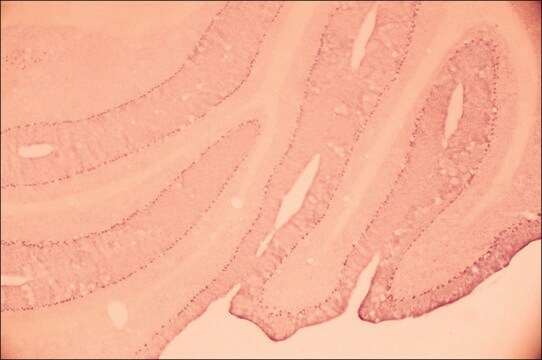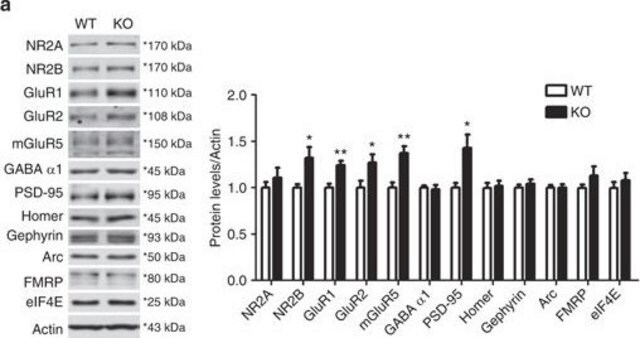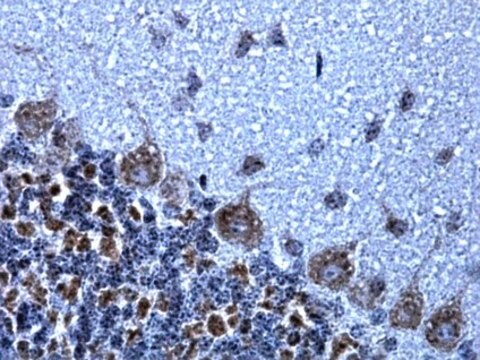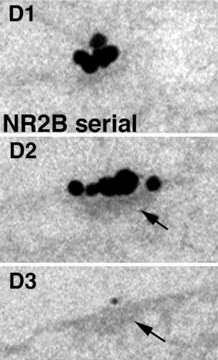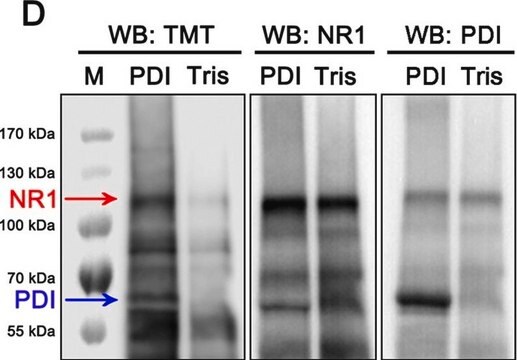AB1557P
Anti-NMDAR2B Antibody
Chemicon®, from rabbit
Synonym(s):
N-methyl D-aspartate receptor subtype 2B, N-methyl-D-aspartate receptor subunit 2B, N-methyl-D-aspartate receptor subunit 3, glutamate receptor subunit epsilon-2, glutamate receptor. ionotropic, N-methyl D-aspartate 2B, Glutamate
About This Item
Recommended Products
biological source
rabbit
Quality Level
antibody form
affinity isolated antibody
antibody product type
primary antibodies
clone
polyclonal
species reactivity
mouse, rat, human
manufacturer/tradename
Chemicon®
technique(s)
immunohistochemistry: suitable
immunoprecipitation (IP): suitable
western blot: suitable
NCBI accession no.
UniProt accession no.
shipped in
dry ice
target post-translational modification
unmodified
General description
Properties of NMDAR include modulation by glycine, inhibition by Zn2+, voltage dependent Mg2+ blockade and high Ca2+ permeability. The involvement of NMDAR in the CNS has become a focus area for neurodegenerative diseases such as Alzheimer′s disease and also epilepsy and ischemic neuronal cell death.
Specificity
Immunogen
Application
1:1,000-1:2,000 dilution of a previous lot was used on immunohistochemistry.
Immunoprecipitation:
3 μL of a previous lot of this antibody (under appropriate conditions) quantitatively immunoprecipitated all NMDAR2B in 200 μg of rat brain.
Western Blot Analysis:
1:100-1:2,000 dilution of a previous lot (NMDAR2B is present in high concentrations in the hippocampus).
Optimal working dilutions must be determined by the end user.
Neuroscience
Neurotransmitters & Receptors
Target description
Physical form
Storage and Stability
Analysis Note
Brain tissue, Rat Purkinje cell dendrites, rat hippocampus lysate, HEK 293 cells expressing NR2B.
Other Notes
Legal Information
Disclaimer
Not finding the right product?
Try our Product Selector Tool.
recommended
Storage Class Code
11 - Combustible Solids
WGK
WGK 1
Certificates of Analysis (COA)
Search for Certificates of Analysis (COA) by entering the products Lot/Batch Number. Lot and Batch Numbers can be found on a product’s label following the words ‘Lot’ or ‘Batch’.
Already Own This Product?
Find documentation for the products that you have recently purchased in the Document Library.
Our team of scientists has experience in all areas of research including Life Science, Material Science, Chemical Synthesis, Chromatography, Analytical and many others.
Contact Technical Service